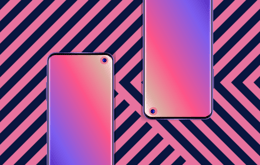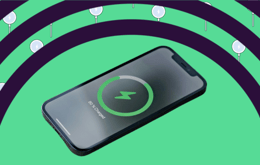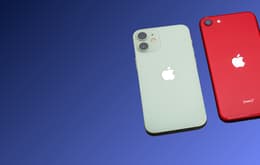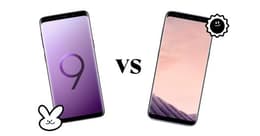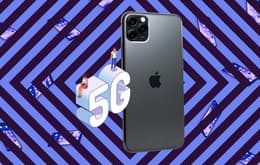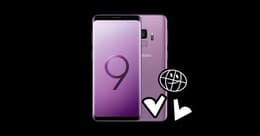
Wondering whether buying refurbished electronics really helps the planet? Here are the facts to prove how refurbished electronics reduce e-waste, save you money, and more.
Choosing a refurbished smartphone cuts the planet a break
Back Market, like a lot of other companies, was founded on a hunch. Ours was that refurbished electronics could be a driver for reducing e-waste and a sustainable alternative to buying new devices (and everything that comes along with that: carbon emissions, pollution, depletion of water and raw materials).
It looks like we were right.
Back in October 2020, we brought an idea to ADEME, the French Environment and Energy Management Agency: to quantify the environmental impact of the refurbished electronics industry worldwide.
In July 2022, the ADEME released a study on the environmental impact of refurbished smartphones, computers, tablets, and other electronics. This report, called “Assessment of the environmental impact of a set of refurbished products” — a one-of-a-kind study that’s never been done before — was recently published in French (and is available in English). You'll find below an explanation on the key figures regarding specifically refurbished smartphones.
(Note: Back Market did not support the study financially; we only suggested the idea to ADEME.)
4 key figures about how refurbished smartphones reduce the negative impact of tech on the planet
1. A single refurbished smartphone prevents 6.29 oz (178.2) of e-waste
Each brand new smartphone generates about 7.06 oz (200.2 g) of e-waste. A refurbished smartphone, just 0.78 oz (22 g) — that’s 89% less!
Imagine holding 20 pairs of AirPods in your hands. That’s about the amount of e-waste a refurbished smartphone saves from the landfill (6.29 oz or 178.2 g, to be exact).
In just the first quarter of 2021, Apple sold 58 million smartphones. Samsung sold 76 million smartphones. If even half of those sales were replaced by refurbished smartphones, the world would have saved 13,190.63 US tons (11,966,333.71 kg) of electronic waste.
2. A refurbished smartphone prevents 537.05 lbs (243.6 kg) of raw materials from being mined
Anyone who’s had a new smartphone has been a gold digger by default. Raw materials like gold, silver, aluminum, copper, cobalt, chrome — at least 15 different types — are needed to manufacture a single smartphone. All that digging around amounts to about 587.97 lbs (266.7 kg) of earth dug up to get a tiny bit of the metals and minerals needed.
It’s a little ridiculous, especially if all those resources are tossed back to the earth as trash in just a few years. Not-so-fun fact: there’s more gold in 1 ton of e-waste than in 1 ton of gold ore. With manufacturers pumping out 1.4 billion smartphones a year, you don’t need to be good at math to get that we’re depleting our natural resources at an unsustainable rate.
Refurbished smartphones require much fewer raw materials (50.93 lbs or 23.1 kg if you replace the battery or the screen) and actually help us get the most out of the resources that have already been exploited.
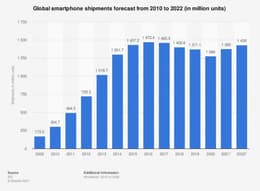
3. A refurbished smartphone prevents 170.4 lbs (77.31 kg) of carbon emissions
Given the amount of energy and resources manufacturing a new smartphone requires, it’s no surprise that around 90% of a device’s carbon footprint is emitted before it ever leaves the factory.
For a new smartphone, that’s 186.1 lbs (84.4 kg) of carbon emissions — which is like driving roundtrip from Houston to Dallas.
A refurbished smartphone produces 15.6 (7.1 kg) of CO2e, from end-to-end. That includes the entire repair lifecycle (from sourcing spare parts to delivery).
4. A refurbished smartphone saves 20,341.24 gallons (77,000 liters) of water
That’s enough water to get your daily recommended 8 glasses of water (2 liters) a day for 103 years.
To put it into perspective, a brand new smartphone sucks about 112 human-years-worth of drinking water (23,537.73 gallons or 89,100 liters), most of which is used for mining and extracting raw materials.
By going refurbished you’re using 86.4% less water. Plus, you might also be earning some karma points for giving back to the fountain of life.
Buying a refurbished smartphone isn’t going to save the world, but it looks like it can help.
There’s a lot going wrong when it comes to how the world manufactures and consumes smartphones. But thanks to this new study, we can say with some certainty that it’s possible to make a difference without too much effort.
Buying refurbished is a small gesture that can have a significant collective impact on climate change. Maybe it’s time to give it a go.
Buying a refurbished smartphone isn’t going to save the world, but it looks like it can help
There’s a lot going wrong when it comes to how the world manufactures and consumes smartphones. But thanks to this new study, we can say with some certainty that it’s possible to make a difference without too much effort.
Buying refurbished is a small gesture that can have a significant collective impact on climate change. Maybe it’s time to give it a go.



